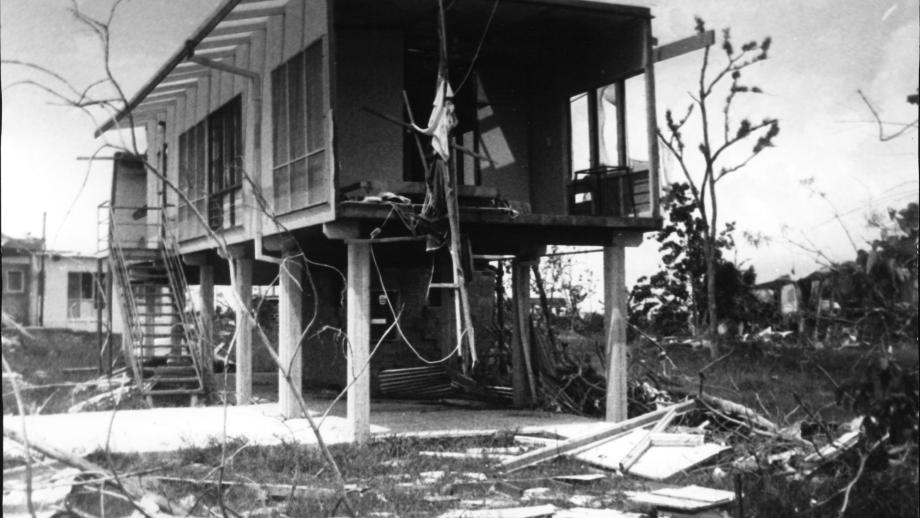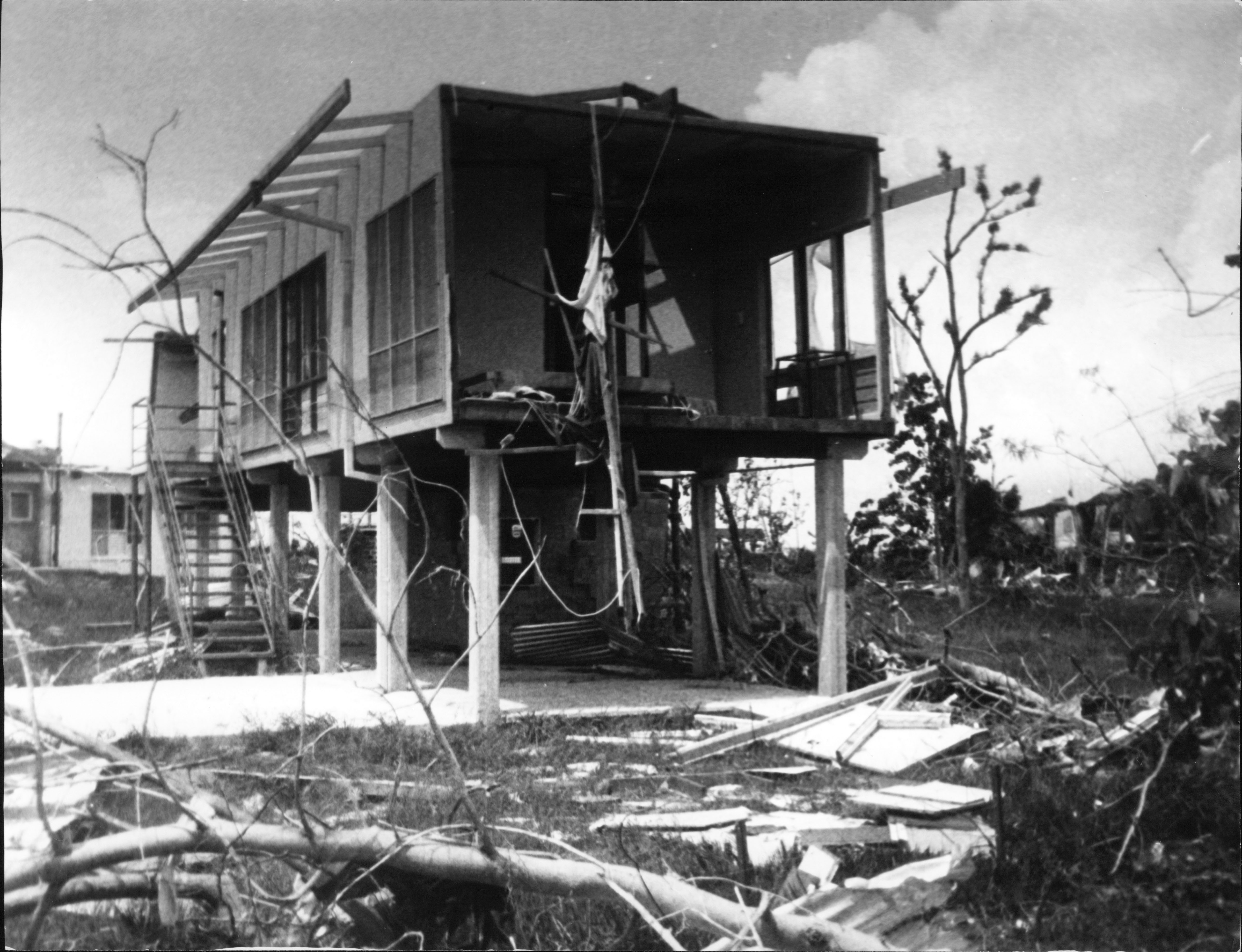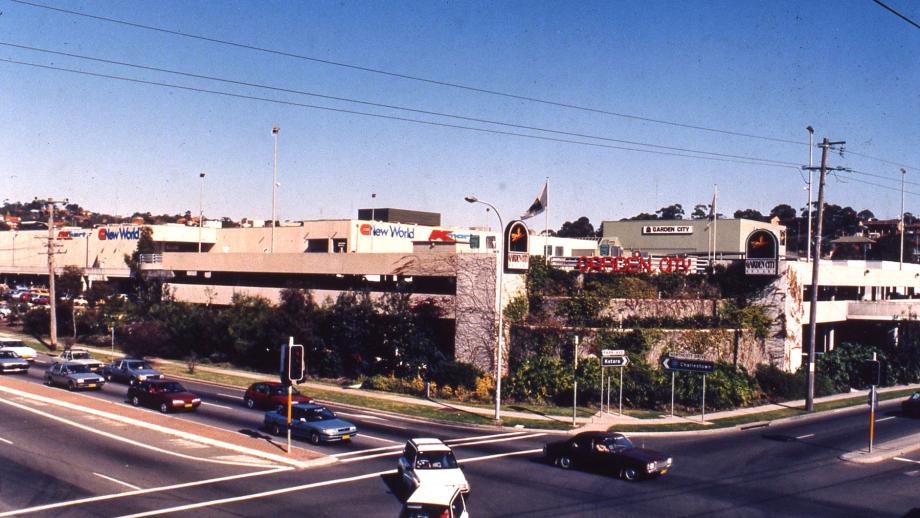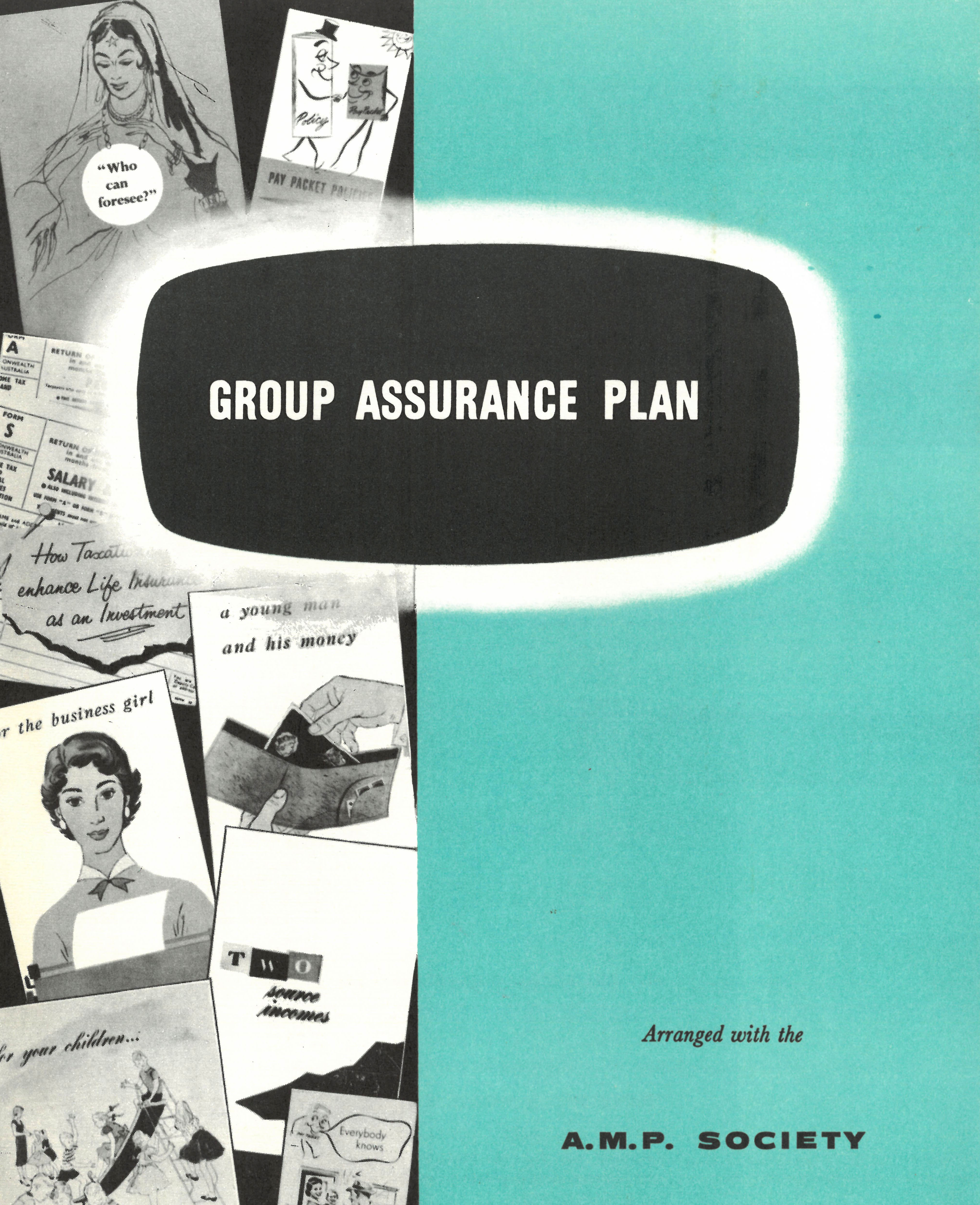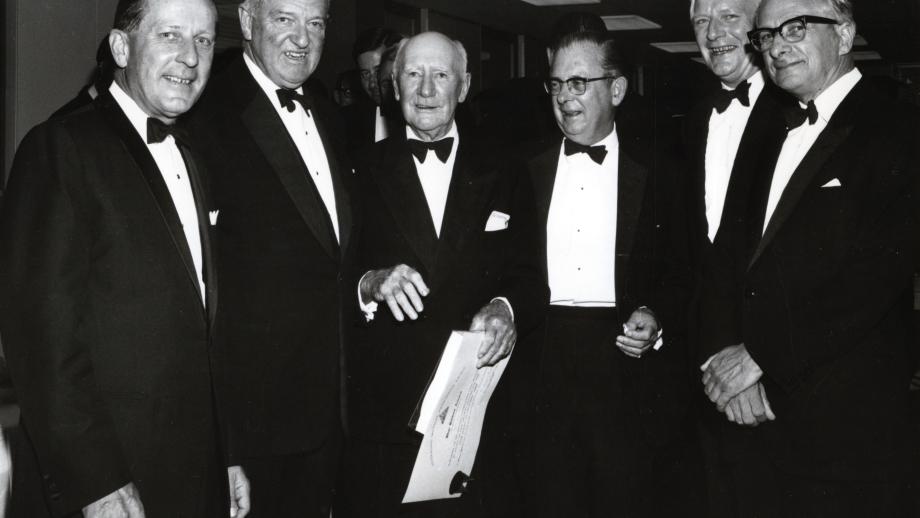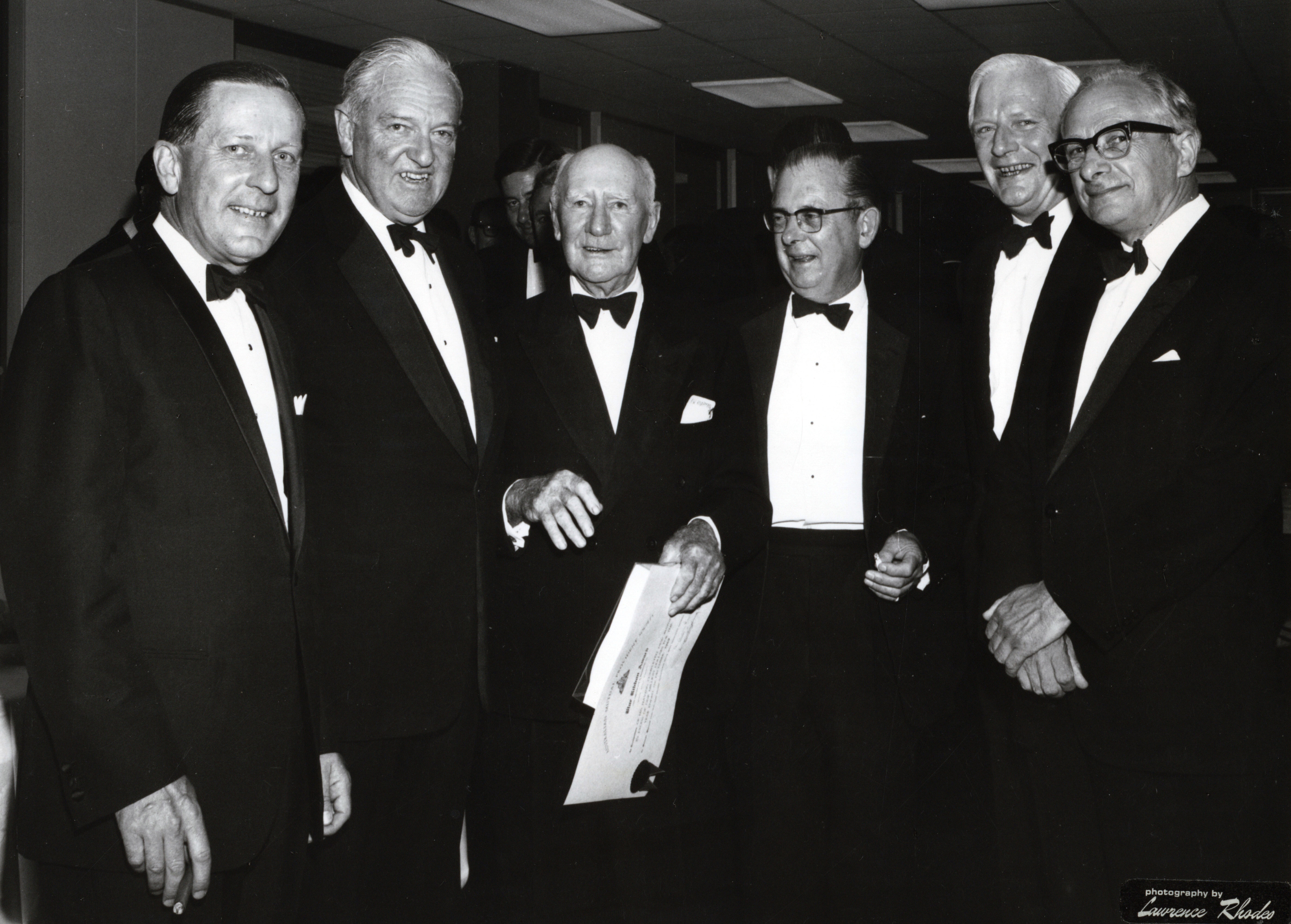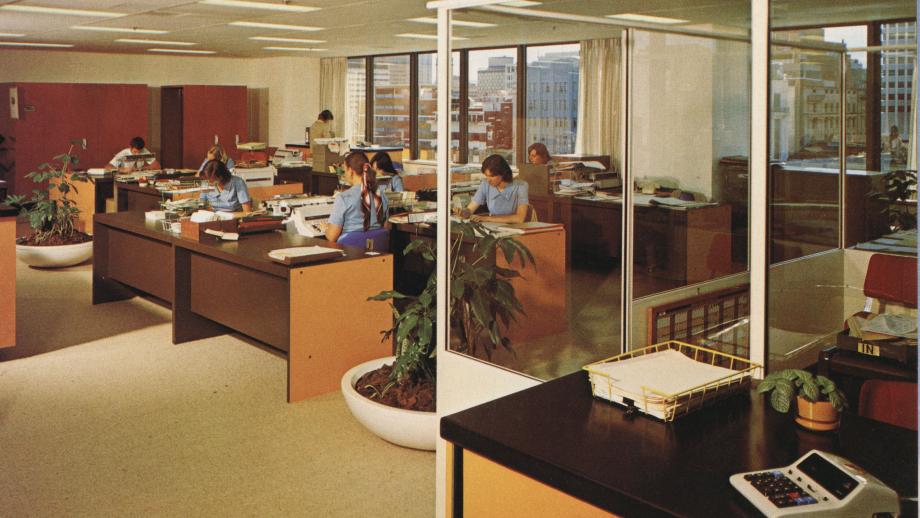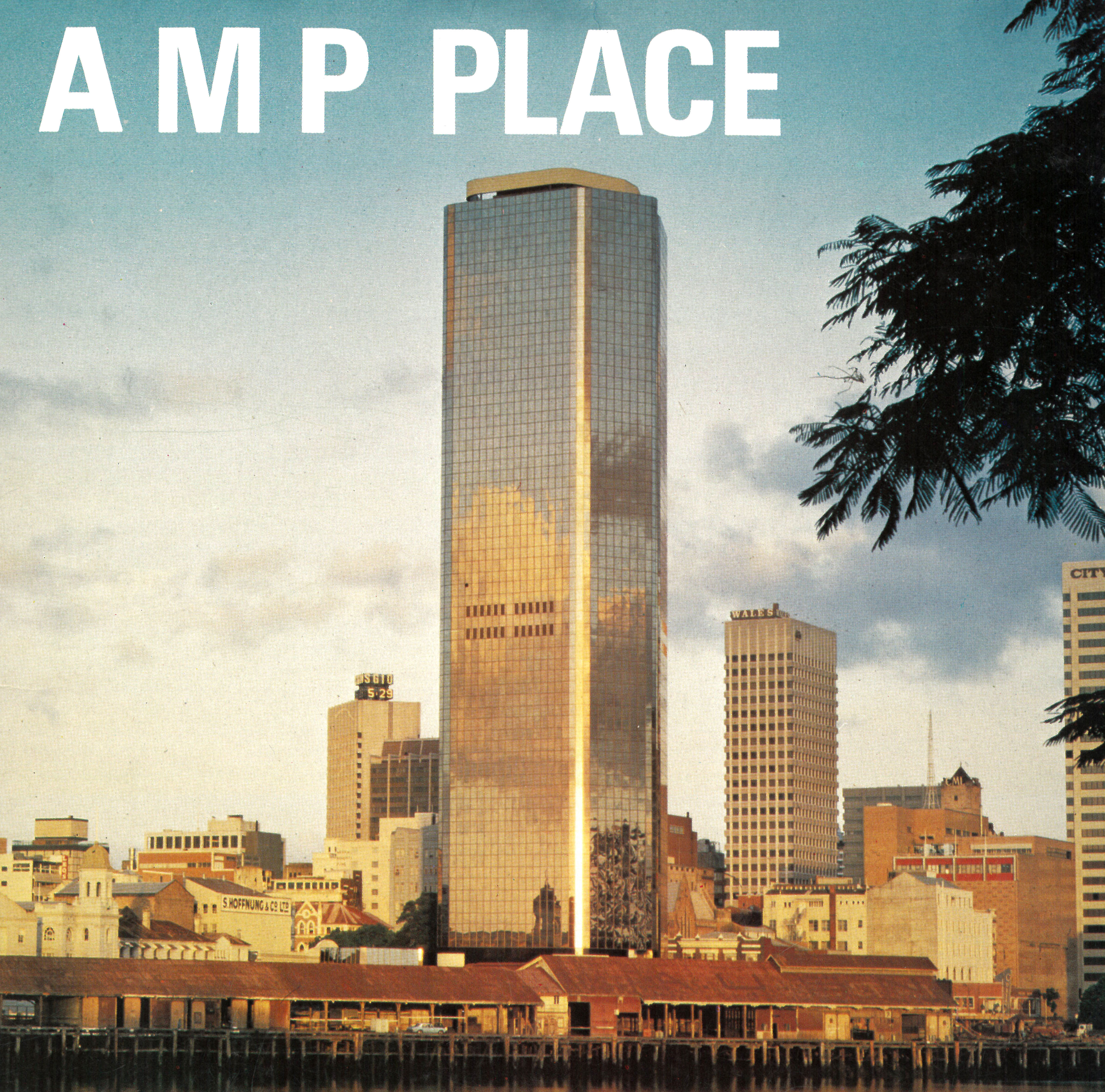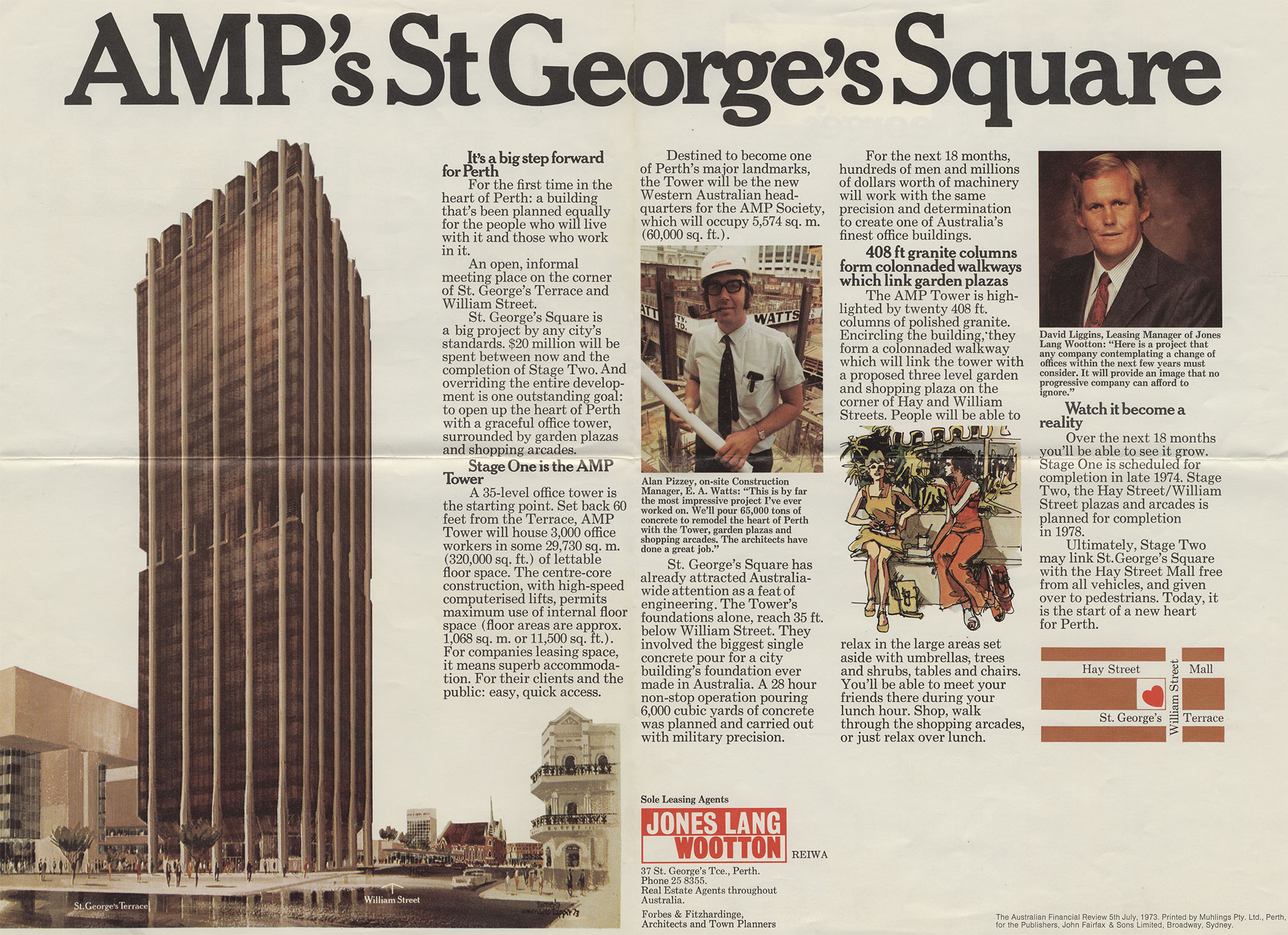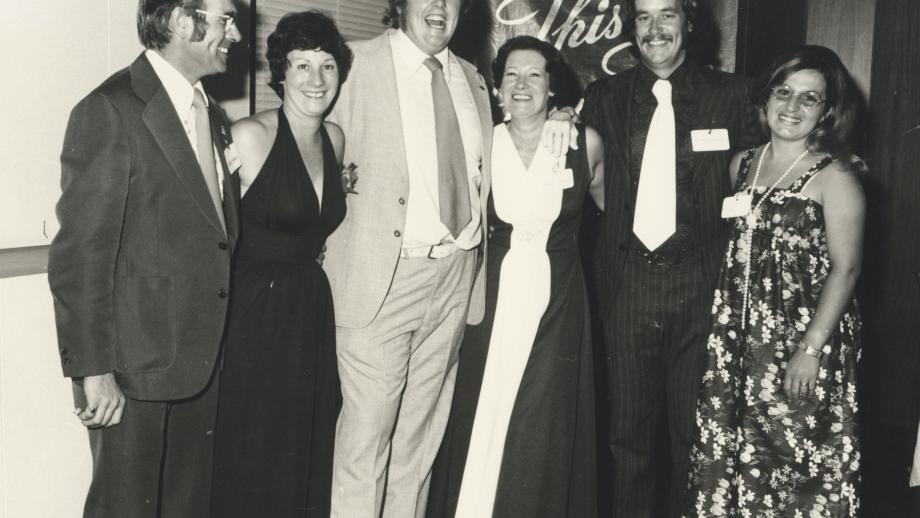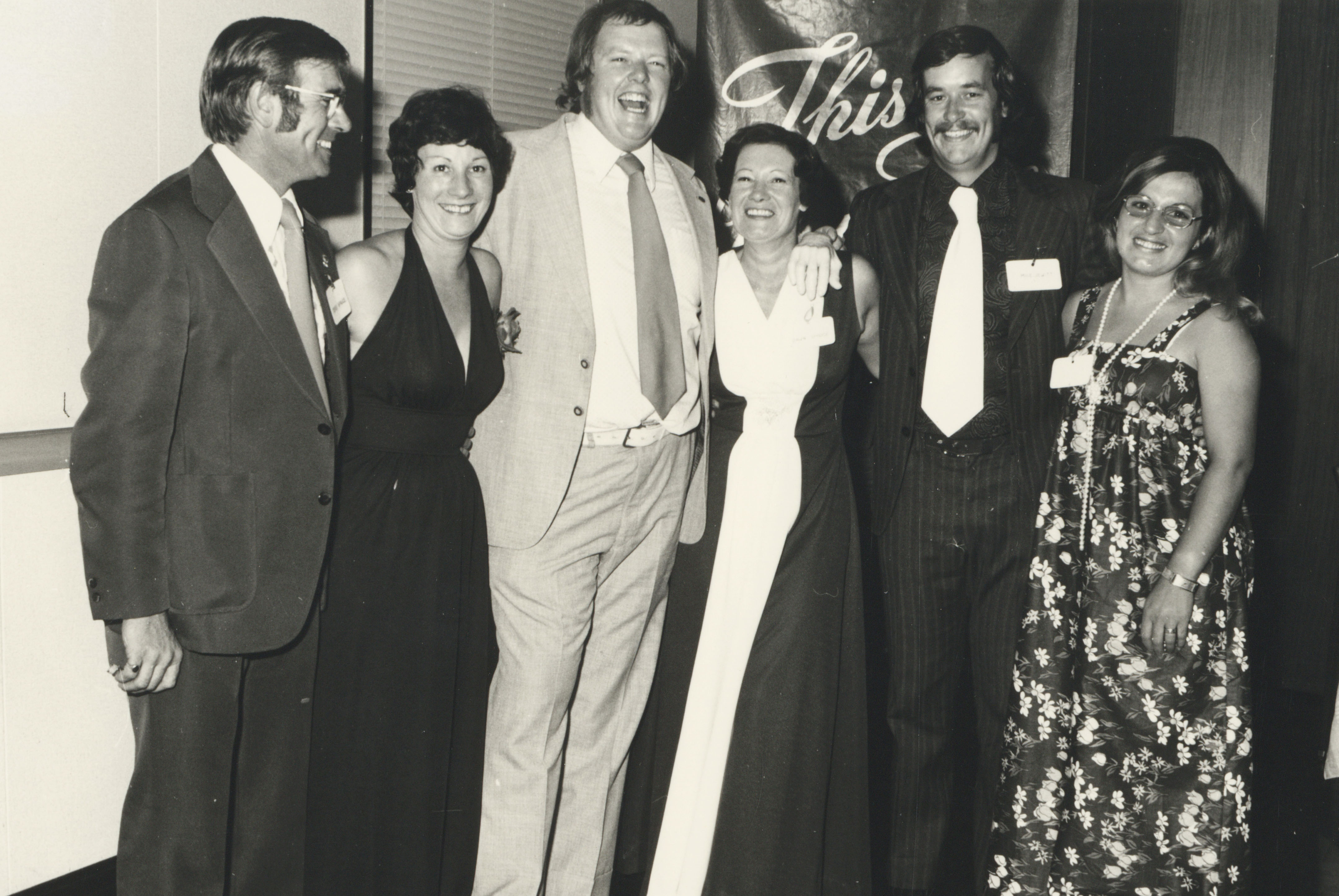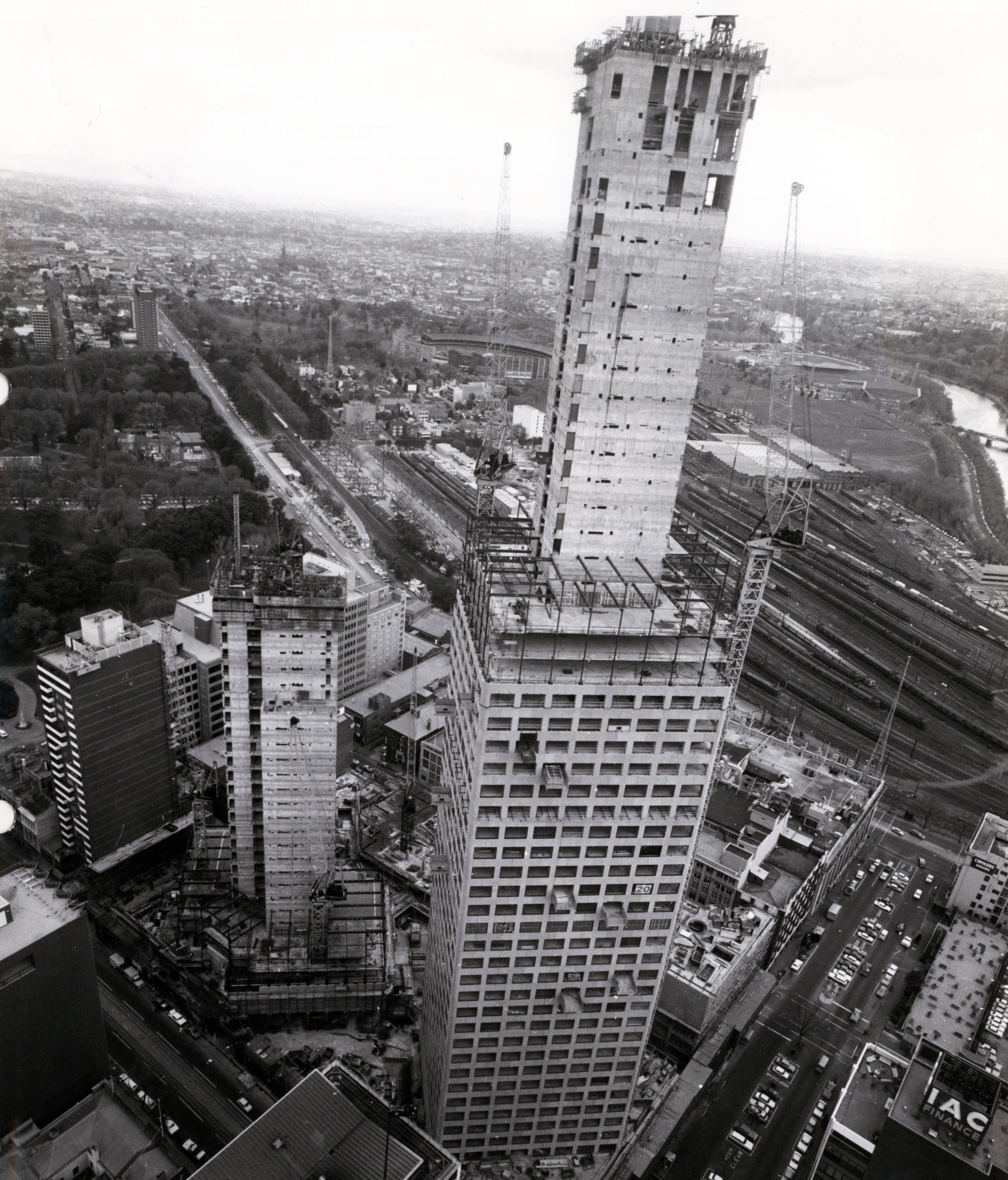The 1970s
From the 1960s AMP’s investment strategy changed course with the discovery of large mineral deposits in Outback and Regional Australia and the Society invested in large mining projects in Western Australia, the Northern Territory, and Tasmania. Before long AMP had over $100 million invested in mining, with almost $50 million invested in BHP alone (Blainey, 1999).
At the end of 1972, AMP held 14% of its assets in shares, 17% in real estate, 22% in mortgages, and 30% in government securities. The growth in real estate investment had risen steadily since the 1940s, with the amendment of the Society’s Act of Incorporation in 1941 finally allowing it to purchase properties that were not intended to be used as AMP offices. As a result, AMP invested heavily in a variety of real estate in cities across Australia and New Zealand. This included office buildings, hotels, apartment blocks, parking stations, and shopping centres. Notable amongst these investments was Centrepoint Tower in the Sydney CBD and Collins Place in Melbourne. AMP invested so heavily in real estate in the early 1970s, that it became the largest private property owner in Australia at the time.
In 1971 AMP Capital Shopping Centres was established and grew to have a portfolio of 26 shopping centres across Australia including Pacific Fair on Queensland’s Gold Coast, the Macquarie Centre in Sydney, and Garden City in Perth. In early 2023 AMP exited this part of its business with the sale of AMP Capital to Dexus Funds Management Ltd.
In the 1970s AMP made significant changes to its structure and workforce. Most notable were the decisions to promote staff based on their performance, rather than seniority and succession determining career paths, and the decision to reclassify positions so that the nature of the work determined the salary, irrespective of the age or gender of the employee (Blainey, 1999). This meant AMP’s female employees finally had the opportunity to be paid the same as their male colleagues and greater opportunities to attain senior positions.
In 1972 the Federal Government proposed changes to life insurance and superannuation that would greatly impact AMP. This included increasing the income taxes paid by life offices, removing the generous tax deductions policyholders could claim on premiums, and a proposed new government-run National Superannuation Scheme (Blainey, 1999).
On Christmas Day 1974 Cyclone Tracey obliterated Darwin. The Northern Territory was managed from AMP’s Adelaide Office and its manager Kel Govey flew to Darwin to assist AMP policyholders as soon as he was able to get on a flight to the Territory on 27th December. AMP was generous with those with lapsed policies and provided they had made regular payments in the past, the Society reinstated their policies so they could make claims. These claims wiped out any profit made by AMP Fire & General over the next two years.
The 1970s brought enormous economic challenges both for the Australian and global economies. High inflation meant many policyholders were in the unenviable position of holding policies that were worth less than the premiums they had paid. At the same time, the cost of everyday essentials was climbing, and unemployment was high. Against this backdrop, AMP had to reassure Australians that insurance was still a good investment. In terms of its own investments, AMP invested even more heavily in mining ventures and property, and these investments paid dividends.
To streamline the management of its investments, AMP’s principal board delegated responsibility for certain investments to specific states. From 1976, the Queensland Board became responsible for investments in the sugar and brewing industries; the South Australian Board responsible for investments in pastoral and electrical industries; the New South Wales Board responsible for investments in the steel, transport and banking industries; and the Victorian Board responsible for investments in the media, retail and automotive industries (Blainey, 1999).
